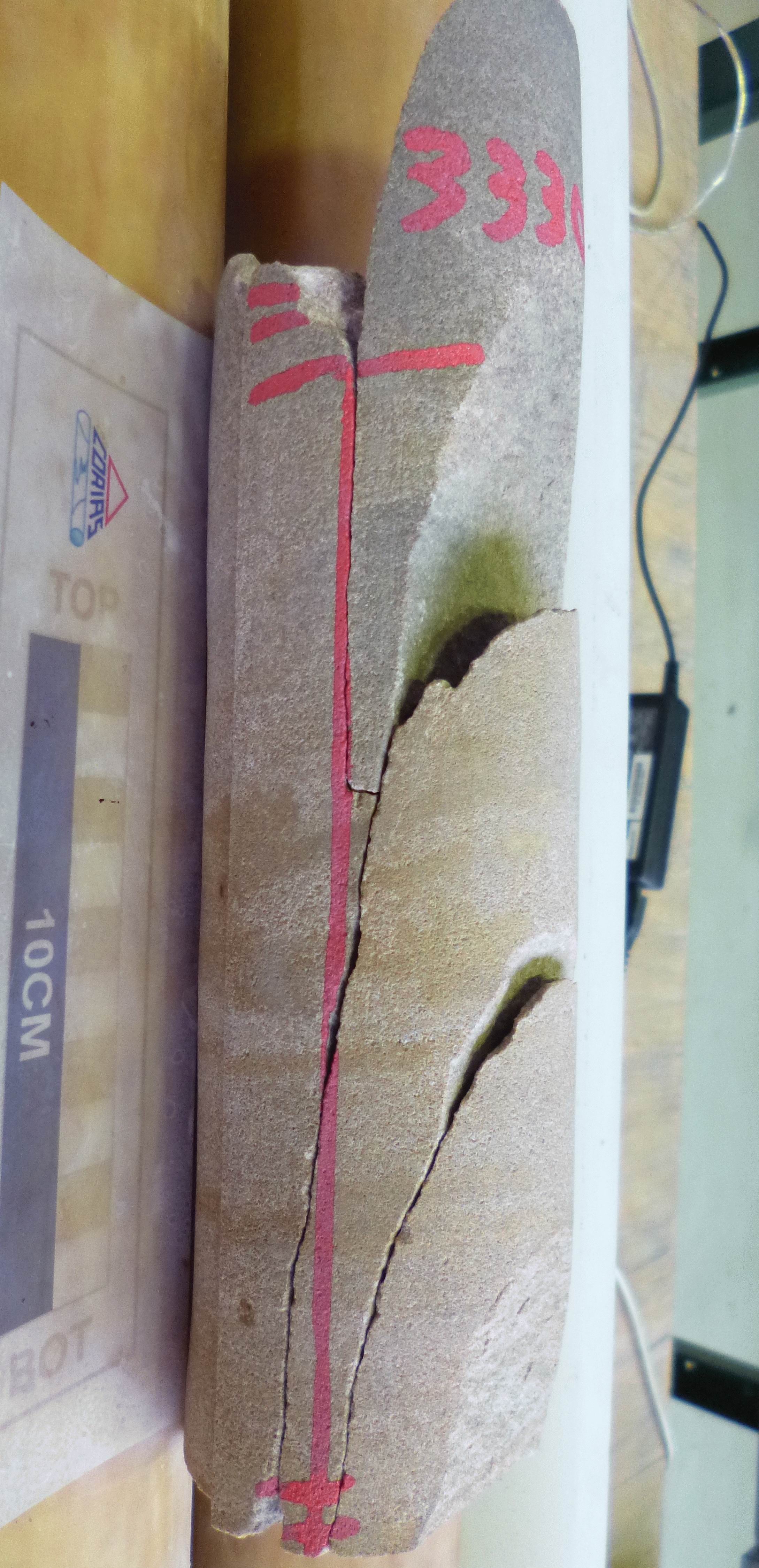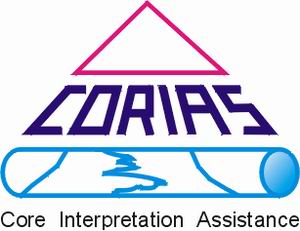Corias - Core Interpretation Assistance - 74, Allee de la Robertsau F-67000 Strasbourg
Phone: +33.3.88.24.24.00 - Mobile: +33.6.07.56.11.78 -
Mail: christian@corias.com
© Corias 2018 - All rights reserved.
Generally, the induced fractures are stress-related petal coring-induced fractures, which initiate from near the core boundary and propagate downwards from a dip of 30° to 75°. Some of these induced fractures form at the same depth on opposite sides of the cores and several of them propagate downward into the core but usually stop at about 1/3 to 1/4 of the core diameter
It is commonly thought that the petal fractures are tensile fractures that form beneath the core bit and propagate ahead of the core bit. The fractures form along the principal stress trajectories beneath the core bit, as illustrated in the figure. Petal fractures follow optimum lines of stress towards the bit centreline (see traces of lines a, b, c) and possibly outwards as well (lines d, e). The strike of the petal fractures is usually parallel to the maximum in-situ horizontal stress (and is perpen-dicular to the plane shown in the figure).
In a deviated well, the orientation of the induced fracture is only relevant when measured in the drilling position.
These stress-related fractures are developed during or after coring.
The development of induced fractures is under the control of pre-existing mechanical anisotropy (natural fractures and bedding planes). Their orientation is influenced by the in-situ stress.
These fractures were generally observed in the fine-grained and competent rocks. The planes presented moderate dip values, generally around 55°.




